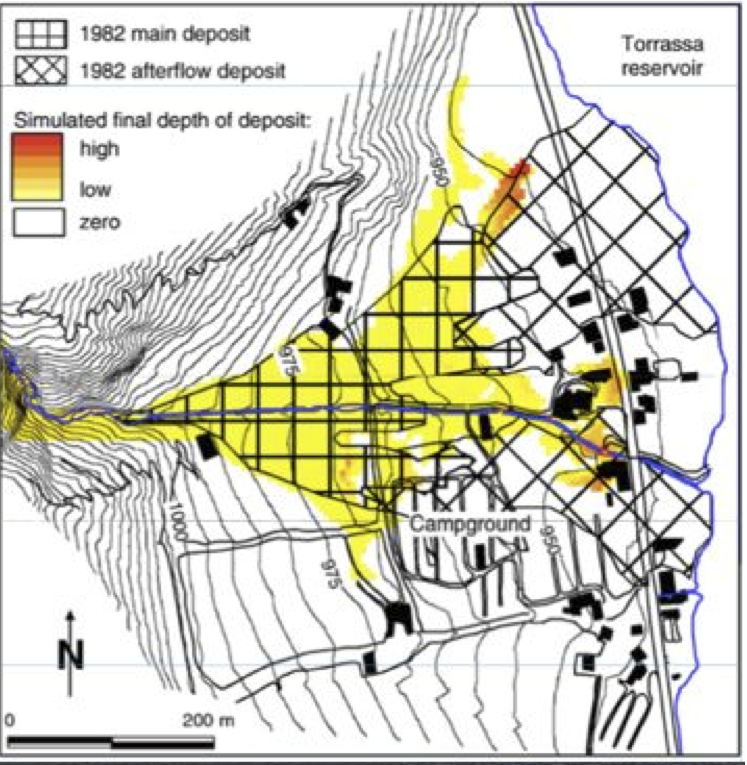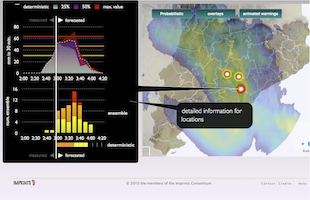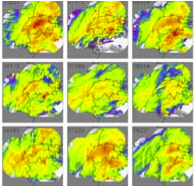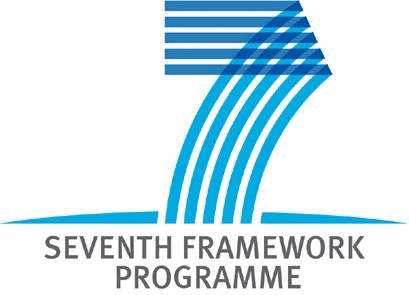Main Results
During the first 18 months of the project the following achievements have been reached
Improving short-term rainfall forecasting
|
A new rainfall nowcasting technique for mountainous areas, NORA, has been fully developed and work is in progress to make it run operationally in real time. Two methodologies for probabilistic short-term rainfall forecasting have been developed.. Both techniques are ready to be implemented within the IMPRINTS tools. Two alternative approaches for blending probabilistic (ensemble) forecasts combining radar-based and NWP-model-based precipitation forecasts have been developed. |
|
Developing probabilistic FF/DF early warning systems
|
Compilation of an inventory of the flood risk management plans available in the test-bed regions. From them, three approaches to identify the areas prone to FF/DF events have been identified. Development of a toolbox for quick determination of FF/DF risk areas, allowing potential users to friendly establish risk maps from generally available input data. Their applicability either to the verification of existing risk maps or to provide a first regional assessment in regions not yet covered by local risk maps enhance the interest of the obtained results. Pre-operational set-up of the developed early-warning system providing daily FF forecasts for the IMPRINTS test-beds. The results are currently being tested in a daily base by SCHAPI in the Gardon dʼAnduze basin. Development of a Probabilistic Flash Flood Guidance System (PFFGS) using high- resolution radar rainfall maps over regional domains to produce flash flood early warnings at river scale. |
 |
Developing an integrated hydrometeorological probabilistic FF forecasting system
|
The available hydrological models have been implemented at the various test basins and a first draft of the integrated hydrometeorological probabilistic FF forecasting system has been outlined.
|
 |
Developing a Rule-based Probabilistic FF/DF Forecasting System
|
The Identification of the governing variables to be included in the rule-based system has been achieved and a hierarchy of static and dynamic governing variables has been established. The methodologies to set up the knowledge base from which to derive the rules to determine if the probability of a FF/DF occurrence is over a certain threshold have been identified and described. The simulations covering a wide range of possible rainfall scenarios to establish the knowledge base have been completed. The main results have been summarized. |
 |
FF/DF risk management and mitigation in changing environments
|
A compilation of the lessons learnt from past FF/DF events in the test-bed basins has been carried out to propose future strategies on risk management based on such a experience. The main potential future changes that are likely to occur in the test-bed areas and may affect the risk level related to FF/DF have been identified and characterized. The methodologies to estimate the impact of the potential changes on the governing variables of the FF/DF occurrence (used in the rule-based system) have been developed on the basis of results published in previous studies. Plausible future scenarios have been simulated to adjust the changes in the governing variables characterising the basin. These will be used in the rule-based system to establish the impact of the studied changes. |
 |
Specifications for the Practitionersʼ Tools for the test-beds verification
|
The compilation of the information from the practitionersʼ procedures (current practices) and the available data from the test-beds has been completed and the results have been reported.
|
 |
Development of Practitioner Tools
|
A first version of the planned platform has been developed . Some tests related to the implementation of rainfall forecasting modules have been carried out. These tests will be used as a first draft that will help to define generic tools for the integration of the technologies from the rest of SubProjects.
|
 |





